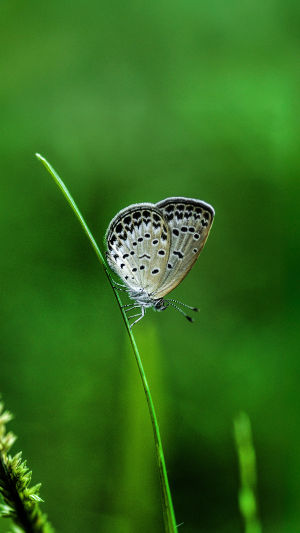Exploring the vibrant world of Lepidoptera offers our Lykkers a chance to appreciate one of nature's most colorful and ecologically important insect groups.
Known for their broad, often brightly patterned wings, butterflies are not only beautiful creatures but also key players in many ecosystems worldwide.
This article presents an organized overview of Lepidoptera, their ecological role, challenges they face, and inspiring examples of conservation efforts.
<h3>What Are Lepidoptera?</h3>
<b>Definition and Features</b>
Lepidoptera is a large order of insects, commonly called butterflies and moths. The name, which means "scale-covered wings," a reference to the tiny scales that create their distinctive patterns and colors.
These scales may be colorful or provide camouflage, helping them blend into the environment. While butterflies and moths share many similarities, they can generally be distinguished by antenna shape and resting wing positions.
<b>Life Cycle</b>
The Lepidoptera life cycle consists of four stages: egg, larva (caterpillar), pupa (chrysalis), and adult. This complete metamorphosis is typical of holometabolous insects and allows them to occupy different ecological niches at each stage.
<h3>Ecological Importance</h3>
<b>Wide Range of Habitats</b>
Butterflies inhabit diverse environments globally, from deserts to arctic zones, except Antarctica. Their adaptability allows them to thrive in both natural and human-influenced habitats.
<b>Pollination Role</b>
Among insects, butterflies are important pollinators, ranking just after groups like bees and hoverflies. They contribute significantly to the reproduction of many flowering plants by transferring pollen as they feed on nectar.
<h3>Current Status of Butterflies</h3>
<b>Global Decline</b>
Like many insect groups, butterflies face a worldwide decline in population. Species that adapt well to changing conditions tend to persist, but those that specialize in specific habitats or plants are especially vulnerable.
<b>Sensitivity to Environmental Change</b>
Rare species often depend on very specific environmental factors or plants. When these conditions deteriorate, these butterflies suffer the most, highlighting the need for focused conservation efforts.
<h3>Threats to Butterfly Species</h3>
<b>Climate Change</b>
Rising temperatures and shifting weather patterns affect habitats and the timing of life cycles, threatening many butterfly populations.
<b>Pesticide Use</b>
Agricultural chemicals reduce butterfly numbers by harming adults, larvae, and their host plants.
<b>Habitat Loss</b>
Destruction or alteration of natural areas is particularly detrimental, as many butterflies depend on specific plants to complete their life cycles. For example, some caterpillars feed exclusively on a single plant species.
<h3>Examples of Butterfly-Plant Relationships</h3>
<b>Zerynthia cassandra and Aristolochia</b>
This Italian species depends entirely on Aristolochia plants, particularly Aristolochia rotunda. The females lay eggs only on these plants, and the caterpillars feed exclusively on their leaves. The butterfly's survival is directly tied to the health of its habitat supporting Aristolochia.
<b>Erebia hispania in the Sierra Nevada</b>
Found only at high altitudes (2000-3000 meters) in southern Spain, this species lives in limited mountain meadows. Its larvae feed on various grasses, but its range is narrow and vulnerable to climate impacts.
<b>Maculinea nausithous and Ant Interaction</b>
This butterfly inhabits southern Germany and other European areas. Its larvae develop initially on the plant Sanguisorba minor. Later, they fall to the ground and are taken into nests of specific ants, where they complete development in a remarkable example of insect cooperation. The dependence on both plant and ant species makes this butterfly highly sensitive to environmental changes.
<b>Papilio hospiton in Mediterranean Islands</b>
Native to Corsica and Sardinia, this rare butterfly resembles the more common swallowtail but occupies isolated mountain habitats. It faces risks from habitat loss and changing climate conditions due to its restricted island environment.
<h3>Successful Conservation Case</h3>
<b>Zygaena viciae in Scotland</b>
Once close to extinction in parts of the United Kingdom, this butterfly's population has recovered thanks to targeted conservation efforts. Protecting the specific plants it feeds on and managing grazing animals helped restore its numbers.
This example shows how focused management and understanding of species' needs can achieve significant conservation success.
<h3>Protecting Rare Butterflies</h3>
<b>Importance of Study and Monitoring</b>
Many rare species such as Erebia christi and Brahmaea europaea require continuous study to inform effective conservation strategies.
<b>Conservation Strategies</b>
Protecting and restoring habitats, reducing pesticide use, and addressing climate impacts are essential. Public awareness and sustainable lifestyles contribute to safeguarding butterfly diversity.
<b>Personal Actions Matter</b>
Adopting environmentally conscious habits in daily life supports broader efforts to combat climate impacts and habitat degradation. Small choices in consumption and transportation add up to meaningful change.
<h3>In Summary</h3>
Butterflies offer more than just beauty; they are vital indicators of ecosystem health and contribute to plant reproduction worldwide. Our Lykkers can appreciate the complexity and fragility of these insects through the lens of ecology and conservation.
While many species face significant challenges, successful recovery examples prove that knowledge, care, and sustainable actions can make a real difference. Protecting these delicate creatures preserves natural heritage for future generations and maintains the balance of life across diverse habitats.





